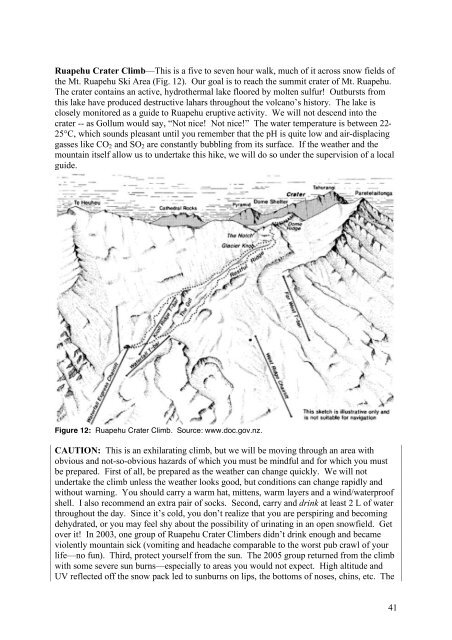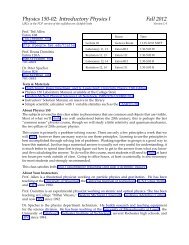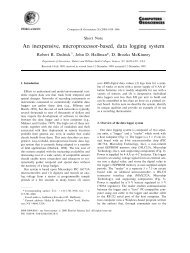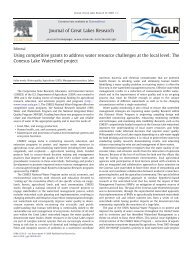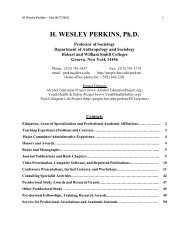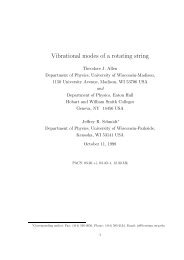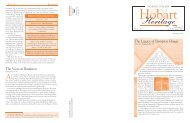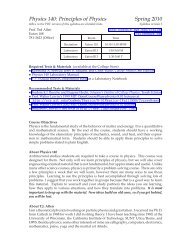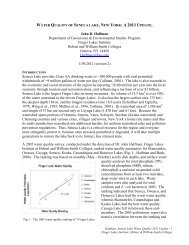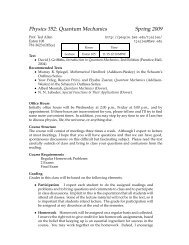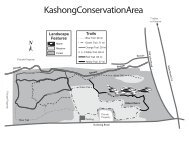Geology of New Zealand Field Trip Guidebook - ResearchGate
Geology of New Zealand Field Trip Guidebook - ResearchGate
Geology of New Zealand Field Trip Guidebook - ResearchGate
Create successful ePaper yourself
Turn your PDF publications into a flip-book with our unique Google optimized e-Paper software.
Ruapehu Crater Climb—This is a five to seven hour walk, much <strong>of</strong> it across snow fields <strong>of</strong><br />
the Mt. Ruapehu Ski Area (Fig. 12). Our goal is to reach the summit crater <strong>of</strong> Mt. Ruapehu.<br />
The crater contains an active, hydrothermal lake floored by molten sulfur! Outbursts from<br />
this lake have produced destructive lahars throughout the volcano’s history. The lake is<br />
closely monitored as a guide to Ruapehu eruptive activity. We will not descend into the<br />
crater -- as Gollum would say, “Not nice! Not nice!” The water temperature is between 22-<br />
25°C, which sounds pleasant until you remember that the pH is quite low and air-displacing<br />
gasses like CO 2 and SO 2 are constantly bubbling from its surface. If the weather and the<br />
mountain itself allow us to undertake this hike, we will do so under the supervision <strong>of</strong> a local<br />
guide.<br />
Figure 12: Ruapehu Crater Climb. Source: www.doc.gov.nz.<br />
CAUTION: This is an exhilarating climb, but we will be moving through an area with<br />
obvious and not-so-obvious hazards <strong>of</strong> which you must be mindful and for which you must<br />
be prepared. First <strong>of</strong> all, be prepared as the weather can change quickly. We will not<br />
undertake the climb unless the weather looks good, but conditions can change rapidly and<br />
without warning. You should carry a warm hat, mittens, warm layers and a wind/waterpro<strong>of</strong><br />
shell. I also recommend an extra pair <strong>of</strong> socks. Second, carry and drink at least 2 L <strong>of</strong> water<br />
throughout the day. Since it’s cold, you don’t realize that you are perspiring and becoming<br />
dehydrated, or you may feel shy about the possibility <strong>of</strong> urinating in an open snowfield. Get<br />
over it! In 2003, one group <strong>of</strong> Ruapehu Crater Climbers didn’t drink enough and became<br />
violently mountain sick (vomiting and headache comparable to the worst pub crawl <strong>of</strong> your<br />
life—no fun). Third, protect yourself from the sun. The 2005 group returned from the climb<br />
with some severe sun burns—especially to areas you would not expect. High altitude and<br />
UV reflected <strong>of</strong>f the snow pack led to sunburns on lips, the bottoms <strong>of</strong> noses, chins, etc. The<br />
41


